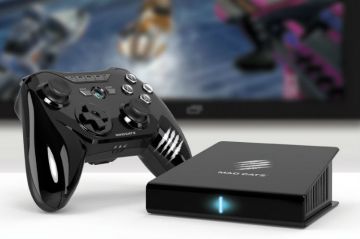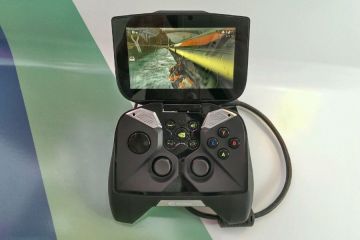As Sony and Microsoft prepare to launch their next big game consoles, there’s something far more exciting on the horizon.
It’s the idea that if you already own a powerful gaming PC, you might not need a dedicated game console at all. Valve and Nvidia are both working on ways to deliver high-end gaming to any television, and to other screens around the house. Your gaming rig would handle all the intensive computing, then it would stream the video and audio to a less powerful device over your wireless router.
Valve now says it will begin beta testing in-home streaming through its Steam service later this year. And judging from the language of Valve’s call for participants (“stream games from one computer to another”), you won’t even need SteamOS or a Steam Machine to take advantage. A powerful desktop PC and a cheap laptop, with Steam software installed on both, could be enough. Dedicated streaming boxes will likely follow, piping your PC games library into the living room for cheap.

Nvidia, meanwhile, has been experimenting with the same idea, using its Shield gaming handheld. Shield can connect to desktop PCs with supported Nvidia graphics cards, and stream games over a local network. Nvidia has dubbed this feature “GameStream,” and recently moved it out of beta.
Shield is more of a tech demo for Nvidia processors than a mainstream product, so I’ve wondered if GameStream might land on more devices with Nvidia’s Tegra 4 processor inside. On Sunday, Engadget reported that Mad Catz is in talks with Nvidia to enable GameStream on Mad Catz’s MOJO game console. For an Android-based game console, M.O.J.O. is pricey at $250, but PC game streaming could be a killer feature.
Inevitably, when talk of PC game streaming comes up, some people wonder what the point is. (See the comments section of this Polygon story on Steam in-home streaming as an example.) I think the promise of this technology is clear:
- You only have to buy good enough gaming hardware for a single PC. Other laptops and set-top boxes can stay cheap and low-powered.
- The powerful PC rig can stay in a separate room, eliminating the need for a huge, noisy box in your entertainment center.
- No need to have a separate game library on a dedicated console, or to worry about backwards compatibility. The games you buy for PC become universal and not tied to a particular generation of hardware.
I don’t want to neglect what Sony and Nintendo are doing with the PlayStation 4 and Wii U, respectively. Sony has already announced that users can stream PS4 games to a PlayStation Vita handheld over a local network, and the Wii U’s GamePad allows users to play certain games on the smaller screen while the television is being used for other things.
But Sony’s and Nintendo’s approaches share an inherent drawback: Neither console is designed around downloadable games like the PC is. The PS4 is more download-friendly than the Wii U, with 500 GB of storage and all new games being available as downloads from day one. But that storage space will run out quickly, and console gamers may still be conditioned to favor physical media (hence the brouhaha over Microsoft’s original disc-slaying plans for the Xbox One). If you have to pop the disc in to play the game, it takes away the effortlessness of in-home streaming.

That’s not to say there are no drawbacks or potential roadblocks on the PC side. So far we haven’t actually seen Valve’s implementation, and there are no details on system requirements. As for Nvidia, some reviews of Shield say that streaming can be occasionally glitchy, though its latency doesn’t seem to be an issue.
But over time, those technical hurdles should shrink on their own. The type of Nvidia graphics cards required for GameStream will become more affordable, and dual-band wireless routers that allow for fast, uninterrupted streaming will become the norm. Eventually, in-home streaming could even be enabled on phones and tablets, allowing users to connect a game controller for a console-like experience.
At the same time, Steam now has more than 65 million active users. I’m wagering that a good percentage of those users would use in-home streaming if the barriers to entry become low enough, and the benefits are clearly explained. Traditional game consoles will stick around, but in-home streaming will allow PC gaming to invade the living room in ways that weren’t possible before.

